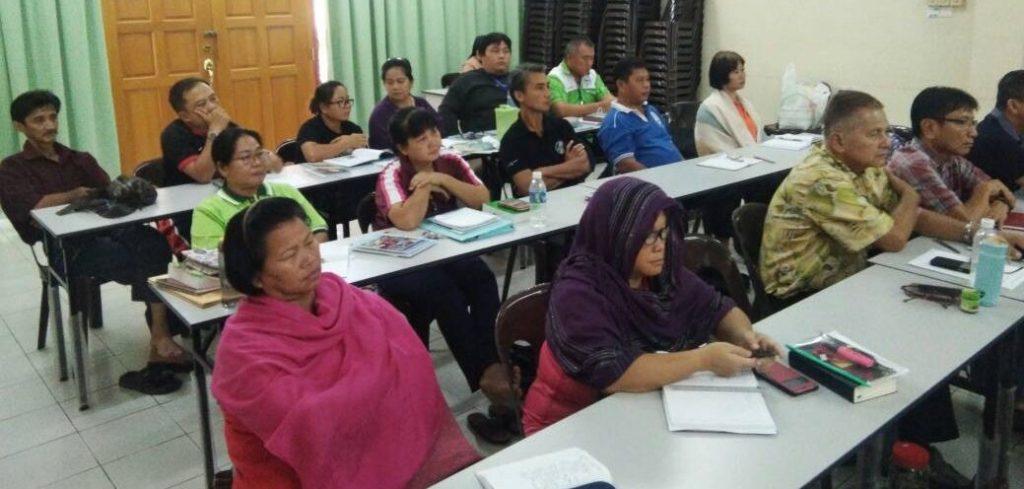Over 100 members from parish choirs across Kota Kinabalu Archdiocese turned up for the choir workshop on 27-29 July 2018 at the Sacred Heart Parish Centre here.
The English choir workshop was organised by the Archdiocesan Liturgy Commission under Father Cosmas Lee.
The workshop was conducted by the Singapore Liturgical Music Team: Father John Joseph Fenelon, Jennifer Anthoney, and Julian Soh.
The 105 participants were key choir conductors, key leaders and musicians from Sacred Heart Cathedral Karamunsing, Church of Mary Immaculate Bukit Padang, St Simon Likas, Stella Maris Tanjung Aru, St Catherine Inanam, Good Shepherd Manggatal, Holy Family Telipok, St Paul Dontozidon, Holy Family Terawi, Holy Trinity Inobong, St Joseph Papar, and Holy Rosary Limbahau.
Also present were Father Paul Lo (short while) and Father Thomas Madanan.
In his introduction, Fr Fenelon affirmed the centrality of the Mass in the liturgical life of the Church and explained what sacred music or music in the liturgy means: “a humble handmaid of the liturgy.”
Quoting from the Constitution on the Sacred Liturgy Sacrosanctum Concilium, Fr Fenelon said:
“Sacred music is to be considered the more holy in proportion as it is more closely connected with the liturgical action” (SC #112), a “humble handmaid” of liturgy (TLS 23) for its value in the liturgy is located in its ability to enhance the ecclesiastical ceremonies, to highlight the liturgical text, and to inspire the faithful.
In relation to this, the participants were introduced to the plainchant and the pipe organ.
For the practical sessions, the participants were divided into two groups: one composed of cantors (chants, choral) and the other of musicians (keyboardists, organists, guitarists, etc).
Plainchant is a form of medieval church music (CE 100) that involves chanting or words that are sung without any instrumental accompaniment. It is also called plainsong. It was the only type of music allowed in Christian churches early on. Gregorian chant is a variety of plainchant.
It was believed that music should make a listener receptive to spiritual thoughts and reflections. This was why the melody was kept pure and unaccompanied. In fact, the same melody would be repeatedly used throughout the plainsong. There are no harmonies or chords that embellish the melody.
In the early centuries, there were many different kinds of plainchant without standardisation. Around the year 600, Pope Gregory the Great wanted to compile all the different types of chants into one collection. Named after him, this compilation was known as Gregorian Chant, which later became a term used to describe this variety of music in general.
As opposed to modern music notation, plainchant is written on 4 lines instead of 5 lines. Also, a symbol called “neumes” was used to indicate pitch and syllable phrasing. There is no record of notation for the earlier forms of plainchant.
The pipe organ is the traditional musical instrument which adds a wonderful splendour to the Church’s ceremonies and powerfully lifts up the human mind to God and to higher things.
The participants were led through the experience of using the plainchant in the Liturgy of the Hours (Divine Office) and in the concluding Mass at St Simon Likas on July 29.
Article reproduced from Herald Malaysia online











